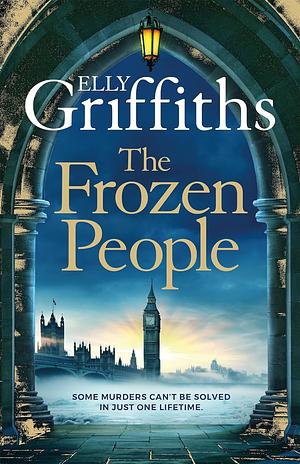I really enjoyed Griffiths’ Ruth Galloway series and have liked her Brighton and Harbinder Kauer books well enough, so I was interested in her new series. However, my interest dropped precipitously when on about page 3, I found it involved time travel.
Ali Dawson is a member of a cold case team dealing with top-secret experimental technology—time travel. She is preparing to travel back to 1850 London as part of an investigation requested by Isaac Templeton, a member of Parliament. He wants the team to try to clear the name of his ancestor, Cain Templeton, who was rumored to have murdered three women and belonged to a club the admission to which supposedly involved a dead body.
By coincidence, perhaps, Isaac is the boss of Ali’s son Finn.
Ali travels to 1850 in time to find Cain Templeton standing over the body of a dead woman in the rooming house he owns. He says he did not kill the girl but thinks an artist named Thomas Creek did. Ali is only supposed to be gone an hour, but when she returns to her pickup point, she isn’t picked up. She’s stuck in 1850.
Already I was having problems with this story. What kind of investigation is Ali supposed to conduct with a one-hour time limit? It’s a ridiculous idea.
With Finn having no word from Ali, he begins trying to find her. He discovers that Ali is on a mission originated by his boss and has an argument with him about it. The next day, Isaac is dead and Finn, who spent the evening drinking with Ali’s boss Geoff and the night passed out, is suspected of his murder. Ali returns from several days in 1850 to find him in trouble.
Besides the issue I mentioned, I had several more issues with this book by this time:
- That the garbled explanation of time travel makes no sense
- That Cain Templeton would invite Ali, a supposed respectable widow in 1850, to dine at his house alone
- That Ali, supposedly tutored in Victorian habits and manners, would think it was okay to accept and assume his servants were her chaperones
- That a winter day in 1850 London would have light skies instead of smoke-filled ones
- That the British government would fund this project
- That it would be thought acceptable to take a personal investigation on
The series is clearly set up to continue a plot line involving Thomas Creek and Cain Templeton. My disbelief having refused to suspend, I won’t be following it.











